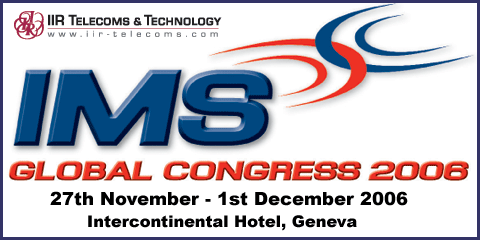|
|

article page | 1 | 2 |
Embracing Subscriber-Centric Fulfillment
Traditional fulfillment techniques and practices are largely network-centric, focusing on the laying in the circuits and physical resources needed to design and activate connectivity-based services.
In this new world, however, services are far more likely to be delivered over a pre-built network, where the build out of physical components is primarily complete. The vast majority of the design and service activation activities will take place in the logical layer, focusing on the logical components that make up the service and the delivery of applications over it.
The ability to accurately track and manage these logical configuration details becomes paramount in this environment, especially if service activation and modification is to be open to end-user control.
|
|
"In essence, subscriber-centric fulfillment extends this enhanced awareness to the operations and engineering side of the house... " |
|

2. The ability to instantly and continuously correlate subscribers to their services and to the active network resources supporting those services. The fulfillment systems must be able to associate the “live” network resources with the services they support, and they must be able to understand how these relate to end subscribers. This awareness ensures that resources and services can be operated in tandem and accurately delivered to subscribers to meet their expectations around quality of service as needed to support their delivered applications. Along with this awareness, service providers need a strategy to manage data integrity across all OSS/BSS, to ensure that the quality and accuracy of data about resources, services and subscribers is high.
|
|
|
|

Subscriber-centric fulfillment shifts the focus away from the physical network to the subscriber, essentially adopting a subscriber-focused approach that mirrors the customer-centered view of Customer Relationship Management and billing systems in the front office. In that realm, orienting systems and processes around an individual subscriber and their array of services and billing needs has long been proven to support churn reduction initiatives by enhancing the understanding of the business relationship with the customer.
In essence, subscriber-centric fulfillment extends this enhanced awareness to the operations and engineering side of the house, enabling the physical and logical resources that support services to be viewed and controlled on a subscriber-by-subscriber basis.
At the most basic level, a service provider needs three things to adopt subscriber-centric fulfillment:
1. The ability to see and control the actual, “live” configuration of the network as it really exists. This is often accomplished through network and service discovery and activation, enabling accurate service activation and modification based on a precise understanding of the actual network resources at any given moment. This prevents provisioning fallout and serves as a basis for automation and customer self service.
|
|

3. The service providers who have adopted these high-level requirements as guiding principles in their fulfillment processes will take several important steps toward becoming increasingly subscriber-centric.
These providers will find it easier to introduce new service offerings that leapfrog the competition and will have a foundation for extending these offerings and adapting them to evolving subscriber needs. Ultimately, these offerings will boost margins, reduce churn and tap narrower market niches, funding innovation and enabling these service providers to move further along the operational transformation path by being closer to the subscriber.
article page | 1 | 2 |
|
|
|




